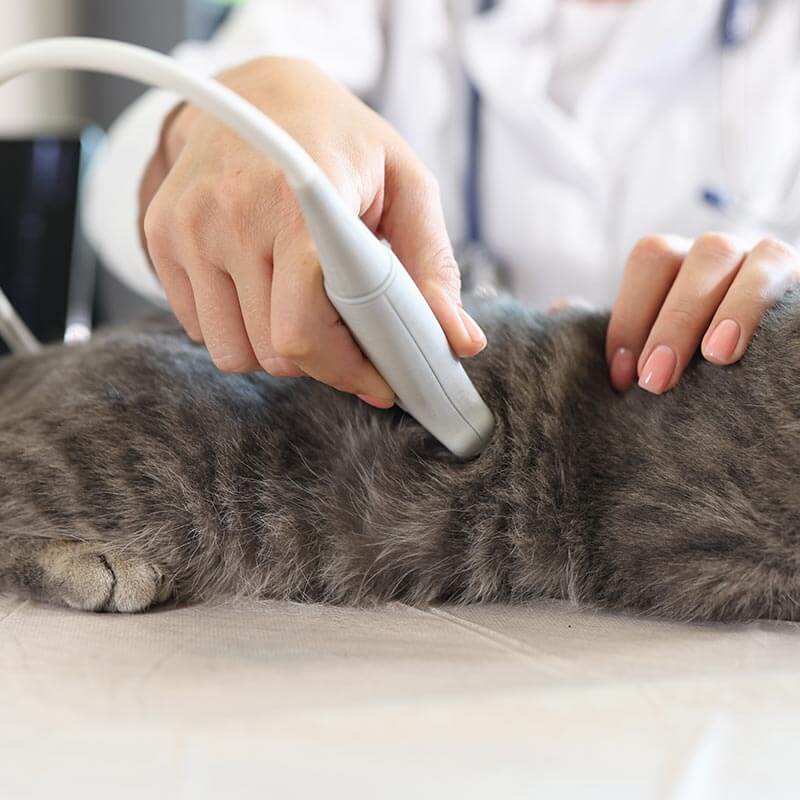Ultrasound

Ultrasound is a safe, non-invasive diagnostic procedure, which, unlike X-rays, does not expose your pet to radiation. An ultrasound machine uses sound waves to penetrate the internal organs and create an image displayed on a monitor. We use a hand-held probe on the skin above the area being studied.
An ultrasound of the heart, or echocardiogram, is the most useful test for evaluating a heart murmur in a pet. At Animal Medical Hospital & Urgent Care, with ultrasound a veterinarian can look inside the heart, in the chambers, and visualize the valves. This non-surgical test can rule out or confirm a diagnosis and aid in determining the amount of leakage and the severity of an abnormality.
Abdominal ultrasound simplifies the diagnosing of internal disease by providing veterinarians with a clear view inside the patient’s stomach, liver, kidneys, and other internal organs.
Some of the Common Reasons to Ultrasound Are:
- Pregnancy confirmation: Ultrasound can be used to confirm pregnancy, determine the number of fetuses, and estimate the gestational age.
- Abdominal evaluations: Ultrasound is commonly used to assess the organs in the abdomen, including the liver, kidneys, spleen, bladder, and intestines. It can help diagnose conditions such as tumors, cysts, abscesses, and organ abnormalities.
- Urinary tract assessments: Ultrasound can provide detailed images of the urinary system, aiding in the diagnosis of conditions like urinary stones, bladder infections, and kidney disease.
- Cardiac evaluations: Ultrasound, also known as echocardiography, is used to assess the structure and function of the heart. It can help diagnose congenital heart diseases, heart murmurs, and heart valve abnormalities.
- Guided biopsies: Ultrasound can assist in guiding a needle or catheter to collect tissue samples for biopsies. This can aid in the diagnosis of various conditions, including tumors.
- Fluid evaluations: Ultrasound can help identify and assess fluid accumulation in the abdomen or chest, aiding in the diagnosis of conditions such as ascites or pleural effusion.
- Monitoring treatment progress: Ultrasound can be used to track the progress of treatments, such as monitoring tumor size or evaluating the response to therapy.
- Guiding procedures: Ultrasound can assist in guiding procedures such as needle aspirations, fluid drainage, or cyst aspirations

